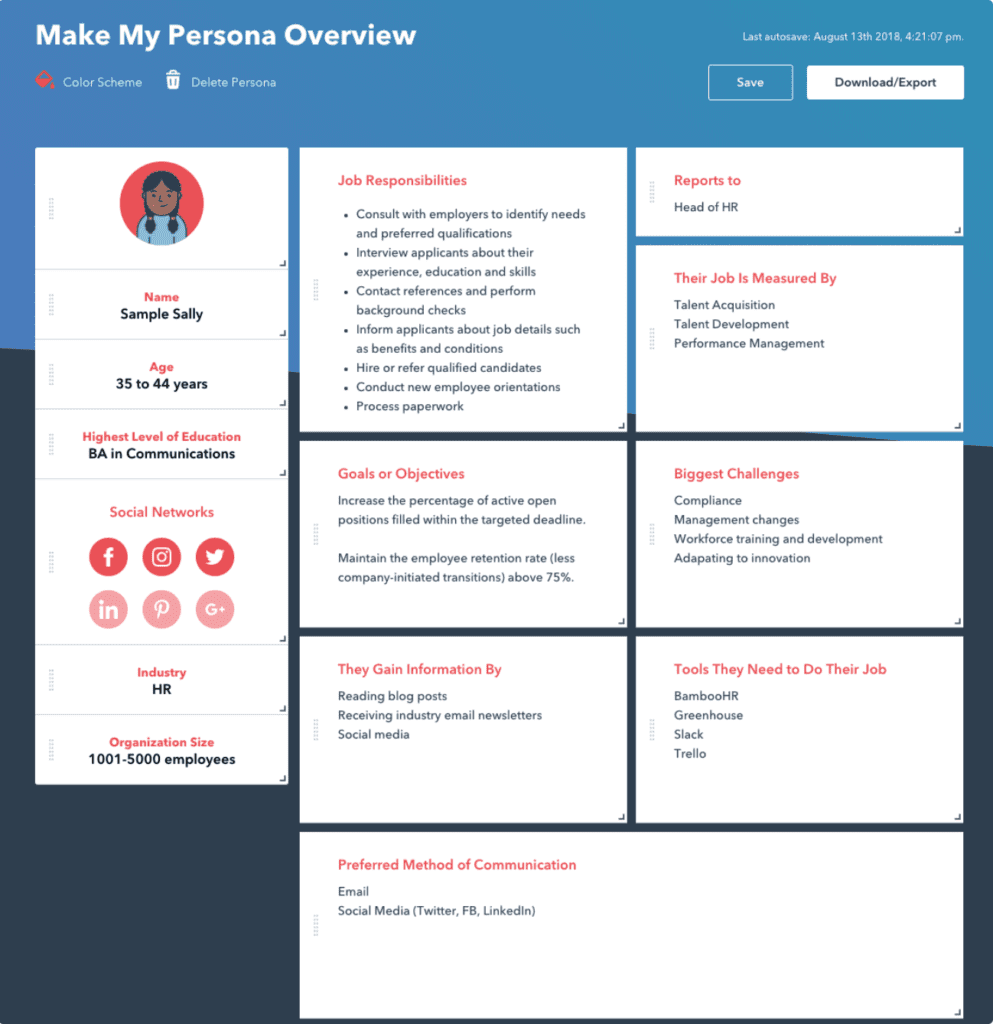Failure to Launch: 7 Challenges Preventing a Successful Inbound Marketing Strategy
Tiffany Schultz
Do you find yourself spinning your wheels on your inbound marketing strategy? Or maybe you’re just starting to entertain the idea of incorporating it into your overall marketing program and find yourself unable to get it off the ground. You’re not alone. There is no shortage of inbound marketing challenges, but there are far more rewards once you can move past some of those obstacles.
Here are the most common challenges of inbound marketing that prevent you from having a successful strategy.
Incomplete Strategy
When it comes to the various challenges of inbound marketing, this is one you’ll see often. Not for lack of good intentions, but because often people are ready to act before they analyze and plan. Don’t get us wrong, you don’t want to find yourself in a situation of analysis paralysis or placing perfection over progress, but you do need a plan in place before you dive in.

The whole point of an inbound marketing strategy is to attract targeted and qualified leads and turn them into customers, so your strategy needs to be built around those clear buyer personas and have a plan in place for each stage of the buyer’s journey. So if you’re starting a blog, for example, you need to create a content strategy. If you’re planning to do social media marketing, you’ll want to identify the social sites that your personas are utilizing and create a posting schedule. Having clear strategies in place can often eliminate or at least reduce some of the challenges of inbound marketing listed below.
Resources
As you likely know, this challenge isn’t specific to just inbound marketing. Having limited time and resources is often a challenge across the board. There just isn’t enough time (or money) in the day, right? And to put a solid inbound marketing strategy into practice, you need those resources, as it can be pretty labor-intensive.
To implement inbound successfully, it often requires you to create a lot of relevant content and produce it consistently. Keyword being consistent. And more than just creating content like blogs, white papers, and case studies, you’ll need to master SEO, have a social media presence, and don’t forget about email marketing.
If you don’t have the necessary time or resources to dedicate to your marketing rigor, you can often address the issue by partnering with freelance writers or agency partners. By going it alone, you might be inhibiting the success of your inbound campaign.
Persona Alignment
You know all that content we talked about needing to produce? One of the challenges of inbound marketing is that you can’t write content for just anyone. You need to ensure that your content and inbound marketing strategy align with your target audience, AKA, your buyer personas. When you curate content designed specifically for your buyer personas, you might even be able to reduce the amount of necessary content that needs to be created. By narrowing your focus, you put quality over quantity, producing better results, and helping reach your potential customers.

Beyond just reaching those potential customers, by creating a buyer persona and aligning your content to them, you can:
- Maximize your ROI
- Generate qualified traffic and leads
- Collect data/insights on the right people
- Use your ad dollars efficiently
- Create a great customer experience
- Improve engagement across all of your channels
More About Buyer Personas: Why Understanding Your B2B Buyer Persona is the Crux of all Marketing Efforts
Creating the Right Marketing Tech Stack

Since resources, or lack thereof, is one of the challenges of inbound marketing, it’s essential to work smarter when it comes to the tools you incorporate into your overall strategy. That said, it can be hard to find the tools that are right-sized for your business, and that will cover all of your needs and that you and your team will actually use. But it can be nearly impossible to execute an effective inbound strategy without a proper marketing tech stack. Tech like:
- A CRM
- Marketing automation tool
- Email marketing tool
- Social media publisher
- Analytics
- Content management system
Is marketing technology right for your organization? Take the free online assessment here.
If you’re lucky (and smart), you’ll utilize a tool that covers multiple bases. When you implement a marketing technology stack, you’re building the framework for a solid inbound marketing strategy. The tools you decide to use are the bones of your plan and enable your team to take your marketing to the next level. This includes:
- Better aligned sales and marketing teams
- Marketing automation and reduction of manual work
- Increased lead generation and the ability to nurture leads
- More impactful analytics, insights, and reports
- Streamlined processes and the simplification of complex operations
- Ability to generate and carry out a comprehensive strategy
Poor User Engagement
Picture it, you have a clear strategy, you have the time and resources you need, you’re aligned perfectly to your personas, and have all the right tech, but you’re still seeing low user engagement. Your strategy must be off, right? Not so fast. What’s the doorway between your prospects, your brand, and a potential sales opportunity? Your website! Before you throw your strategy out the window, be sure to check your website.
Related Reading: The Surprising Ways B2B Website Design Affects Sales
A poor website user experience can be a significant weakness and challenges of inbound marketing that will likely be reflected in high bounce rates and potentially low time on page. Be sure to look at things like poor website design, poor mobile-optimization, and poor user experience. If you find you have issues with any or all three of those areas, fix them. It really is that simple.
Here are some ways to make the content and design of your B2B website purposeful in driving conversion:
- Create clear CTAs (Call-to-Actions)
- Ensure a quality user experience
- Use the right language and tone for your buyers
- Cluster content strategy around topics
- Have supporting pillar content with blog topics
- Humanize your images and videos

Learn more about how to master your B2B website strategy and drive growth here.
Misalignment of Sales and Marketing
We already noted the importance of having a clearly defined inbound marketing strategy upfront. Still, all of that can be for not if your internal teams, specifically sales and marketing, aren’t aligned.
One of the common marketing challenges is that the marketing team has one viewpoint of what makes a great lead and the sales team has an entirely different one. If marketing is creating content to attract the wrong target, then the leads will likely have a lower conversion rate into sales. It’s a lose-lose.
Aligning sales and marketing needs to be a priority for all involved if you want to get traction on your inbound marketing. Why?
- 209% higher revenue from marketing-generated leads (Marketo)
- Win more customers – 67% higher probability that marketing-generated leads will close (Marketo)
- Keep those customers – 36% higher retention rates (MarketingProfs)
- 24% faster three-year revenue growth and 27% more rapid three-year profit growth for B2B (SiriusDecisions)

Expectation Setting
Remember, results take time. Even if you’ve overcome all of the challenges above, you can’t expect to grow your website traffic, write the world’s best content (at scale), generate new, quality leads, and convert them to customers overnight. Your expectations need to be realistic. Whether it’s internal or external stakeholders, make sure that expectations are set up front and well-aligned. Then give it time to work! Work your strategy, be consistent, measure results, and then adjust as needed.
While the challenges of inbound marketing can be tough to overcome, it’s worth the time and energy to implement a successful strategy. But if you find that it’s more than you or your team want to take on, there are resources out there that can help—interested to learn more? Chat with one of our experts and learn how Lake One can help you take your inbound strategy to the next level.


